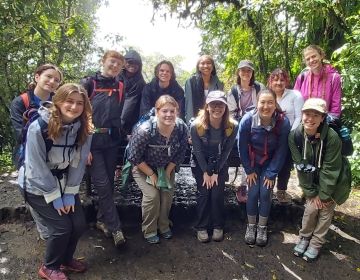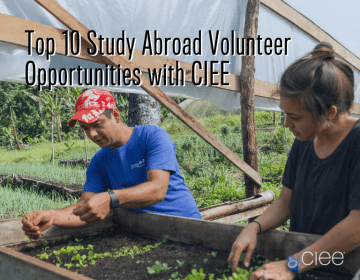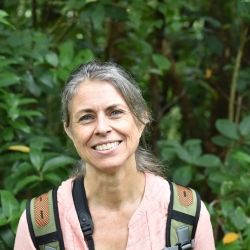Sustainability and the Environment: "Aislyn's Internship Report"
Monteverde-home to many beautiful, green forests. One moment you could be walking through premontane wet forests, and the next you could be sliding through mud in the cloud forest. You can find different life in each forest, but the Resplendent Quetzal and the Three-Wattled Bellbird, both frugivorous birds, can be found in both. Frugivorous is a fancy word scientists use to describe birds that eat fruit. These birds aren’t eating just any fruits though. They’re eating fruits from Ocotea monteverdensis, a tree in the same family as our favorite avocados. They don’t mix theirs with cilantro and salt though!
These birds and trees have a special relationship and prove to be very important to Monteverde. Not only are they captivating, but they play a major role in bringing tourists in from all over the world! You would think Monteverde residents would know all about them! That’s the problem though. Many Costa Ricans don’t know much about these birds beyond their appearance.
That’s where I come in. My task was to create a series of educational videos, in both English and Spanish, geared towards primary school students at Centro Educativo Creativo. My goal in creating these videos was to not only teach students about these charismatic birds and trees, but also to activate their inner birder and get them involved in the conservation of those beautiful forests that lye just beyond their backyards.
You may be thinking, Aislyn, birds are so different from sharks! How is this beneficial for you? Well, this internship may not have anything to do with the ocean, but I was intrigued by the fact that sharks, birds, and trees play major roles in their respective ecosystems and their existence affects humans, even if we don’t realize it. As I pave my way towards a career in shark conservation, I am challenged to effectively relay information to many different people. This internship allowed me to explore an educational technique that is proven to engage students of all ages.
When relaying information to students more than half your age, the obstacles aren’t necessarily associated with the information at hand, but the way you decide to express it. My internship gave me the opportunity to explore interviewing techniques, script writing and video production; but beyond that, I further developed my creative thinking and ability to communicate important information to youth effectively. After various drafts and hikes through the different forest types, I was able to produce 6 cohesive videos accompanied by discussion questions that not only address different topics but also encourage critical thinking beyond the classroom.
Although I am very proud that I managed to work through long days of technical difficulties, last minute changes, and seeing my first Quetzal the last week of the internship (post-video production), I feel my greatest accomplishment is the effect my videos will have on the community. Despite the fact that students haven’t seen the videos yet, and I will be gone before teachers use them, I believe they will inspire students to learn more about these birds and do everything they can to protect this fascinating relationship. These videos are more than just a link on YouTube. They promote conservation and have the potential to change the way this community views forests. I am proud to play a role in that transformation.
Related Posts

Happy Earth Day: Today and Every Day
Happy Earth Day! Every April 22, this global event comes around to remind us how precious our planet is, what sustainable efforts we can make to protect Earth, and that... keep reading

Costa Rica vs. Argentina: Which is Better for Study Abroad?
Imagine yourself sipping mate in a bustling Buenos Aires café or lounging peacefully in a hammock overlooking Costa Rica's lush rainforests. These contrasting scenes represent just a glimpse of the... keep reading

Top 10 Study Abroad Volunteer Opportunities with CIEE
Have you ever wondered if you could volunteer abroad? Perhaps you're looking into study abroad programs that provide international volunteer opportunities. If you’re itching to study abroad and truly make... keep reading
